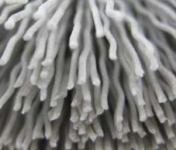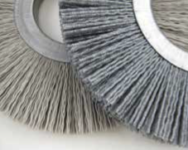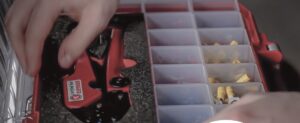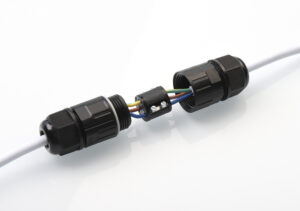
WHAT IS ABRASIVE NYLON?
The cutting action of the filaments of abrasive nylon brushes are unique compared to traditional metal filaments that are designed to cut on the filament tips. Abrasive grains encapsulated in the nylon are exposed on all surfaces of the brush filament. Abrasive action occurs on both the tip of the nylon brush filament as well as the nylon filament sides. In application, the lateral surface of the nylon filament is often drawn across the work surface, functioning much like a flexible abrasive file. Filaments of abrasive nylon brushes are composed of heat stabilized nylon and abrasive grain that are coextruded into monofilament brushes. The results are flexible, homogeneous nylon abrasive brushes that have approximately 30% abrasive loading by weight. Common abrasives used in this material include aluminum oxide, silicon carbide and diamond.
Filaments of nylon abrasive brushes are produced in a variety of filament diameters, abrasive grain types, abrasive grain sizes and abrasive loading. As abrasive grain size increases so does nylon filament diameter. Larger nylon diameter filament is required to effectively bond larger abrasive grains. Larger nylon diameter filaments are less flexible which make them more susceptible to brush filament fatigue and fracture. Smaller diameter filaments bend and recover more easily and more filaments can occupy a given area putting more brush abrasive in contact with the work piece. Brushes made from abrasive nylon should not be run faster than 3500 SFM to avoid overheating and material transference. Abrasive nylon brushes are ideal for light deburring, surface finishing and finishing of irregular profiles.
Material adopted from Brush Research Manufacturing


